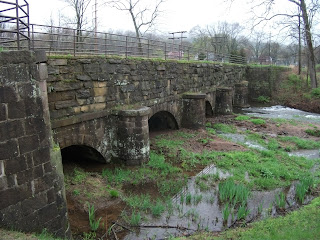Poole Forge

Among the picturesque countryside of Lancaster County is a historic iron forge called Poole Forge. Founded around the time of the American Revolution by a Welshman named James Old, Poole Forge produced armaments and other iron goods by various owners for a burgeoning nation from 1775 to 1852. These days, Poole Forge is a park, has a covered bridge that was constructed over the Conestoga Creek in 1859, hosts weddings from some of the remaining original buildings and a chance to learn about early industry in this part of Pennsylvania. One of the remaining historic buildings at Poole Forge. Part of the historic mansion. A horse and buggy gives Poole Forge a quaint appearance. The covered bridge over the Conestoga Creek, constructed in 1859. Lime kiln used for iron production during the industrial heyday at Poole Forge. Sources: Historic Poole Forge - About Us How to Get There:



